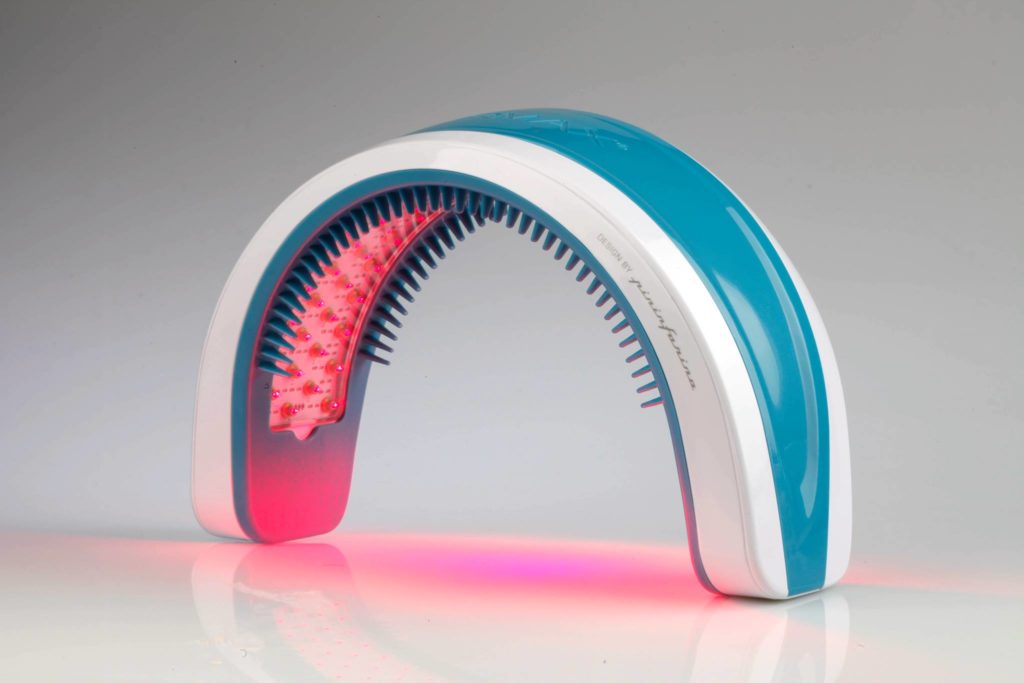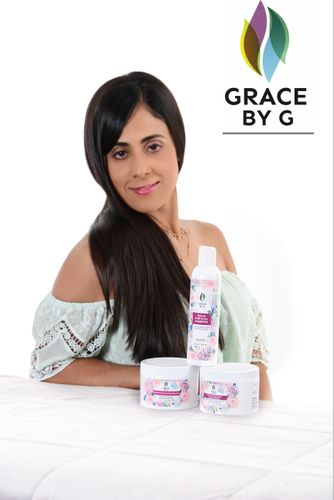Hair Comes Growth!

Imagine 82 medical-grade lasers aimed at your hair follicles to stimulate growth on a receding hairline? HairMax has unlocked the wonders of cellular follicle growth through a medical device that uses therapeutic light.
Several Intellectual Property Patents give HairMax a leadership position in the hair transplant sector, projected to expand by 25% over the next 7 years. Hair loss (and hair thinning) is a common concern for men and women as they age. The use of a light-based cellular approach to tackle this hairy problem is part of a broader interest by medical science in non-invasive or non-pharmaceutical approaches to maintaining youth.
The medical device is FDA-cleared after several clinical trials. It features a patented set of hair-parting teeth – similar to an electric hairbrush – that sift through hair during treatment to allow optimal laser light delivery to each tiny follicle. Each treatment takes less than 90 seconds and needs to be performed three times per week.
The portable light device claims to have no apparent side effects which will, of course, attract Americans interested in non-pharmaceutical or minimally-invasive procedures (that often carry risks or uncertain outcomes). Specifically, the company also claims it’s safe to use for women post-menopause, giving it a broad appeal in the hormone balancing arena, too.
The device can be used at home, reflecting a growing array of self-service medical devices entering the marketplace. It could conceivably remove a number of middlemen in the future, including dermatologists and hair loss surgeons.
The device is the result of 15 years of industry experimentation and market positioning in the hair growth sector. HairMax makes a point of attributing much of its success to several patents and trademarks in its possession. In total, the company holds about 9 patents under The Elysee Beauty Products namesake.
David Michaels, the founder of HairMax, calls the device a leader in the “Science of Hair Growth”. The invention was sparked after his doctor diagnosed him with a common form of hair loss called Androgenetic Alopecia, which often results in a characteristic “M” Shape on a man’s forehead. His research led him to an Australian clinic using phototherapy to treat hair loss. The onsite device produced positive outcomes for the founder, who decided that a home variant should be developed, marketed and distributed.
Some reports put worldwide sales of the medical device at 1.5 million, indicating solid demand for so-called Laser Combs. Consumers are responding well to ONE low price instead of paying for repeat visits to a regenerative clinic.
While the medical device is receiving a lot of positive press some critics counter that “It took a long time to learn how to kill a follicle; it’s going to take a lot more time to learn how to revive one.”
Since the device is non-surgical and non-pharmaceutical it draws a large legion of followers interested in alternative medicine or what many call the wellness sector.
HairMax also believes rivals are on the back foot when it comes to being competitive in the hair loss market.
“On other devices, without hair parting teeth, your hair blocks the light, resulting in a less effective treatment. Your hair, being a photoprotectant significantly blocks the light energy from reaching your hair follicles. Root stimulation does not occur or is greatly reduced,” said the company.
The company also has an aggressive policy in place to protect its IP from copycats, stating that:
“We vigorously enforce and protect our IP to ensure that every customer of HairMax receives a genuine product that is laden with high-end technological and design features; and not a cheap ‘knockoff’”.
The value of medical device patents has become a dominant feature in the healthcare sector over the last decade. Whether a startup is pursuing licensing royalties or wishes to interest larger medical players in a potential sale, the underlying intellectual property increasingly determines its value.
A case in point is the sale of New Wave Surgical to Irish Giant, Medtronic, which netted my client $100 million. The medical entrepreneur confirmed the sale only moved forward because the patents attached to the surgical device gave Medtronic a leadership position in the surgical instrument arena.
HairMax understands this point intimately which is arguably reflected in its market leadership.
I have several other current clients launching products in the wellness and natural products arena that look set to become extremely successful. One of them is Giselle Firmin the creator of Grace By G, a line of natural hair products minus any toxins or impurities including sulphate-parabens. It’s aimed at women with weakened or damaged hair, offering a safe, healthy way to restore hair tone and fullness.
Both Grace By G and HairMax are capitalizing on American’s insatiable appetite for medical tools or products that are non-invasive and non-toxic.
These market segments are huge, offering great value to entrepreneurial medical device inventors. For instance, the Regenerative Medicine Market is forecast to reach 90 billion by 2025 – a growth rate of 24%, matching the earlier figure for the hair transplant sector.
If you think small medical startups have no place in this arena, think again.
Giants like Johnson & Johnson are creating partnerships with inventors through their incubator platforms such as JLABS, which gives entrepreneurs access to massive R & D infrastructure and mentorship programs. Increasingly, they are looking for medical device inventors with strong IP portfolios and transformative product lines that could deliver strong ROI in the healthcare sector. This development was chronicled on The Patent Professor, offering an enticing view of the future for startups, entrepreneurs, and inventors – especially if a bulletproof patent is present.
https://www.medicaldevicepatentattorneys.com/2018/10/hair-comes-growth/trackback/

